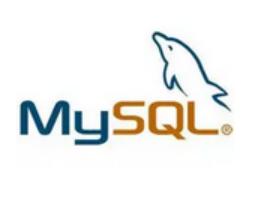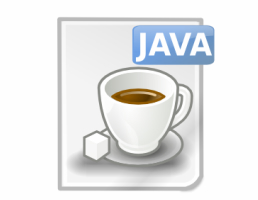SqlServer面试题,SqlServer也是常用的数据库之一,往往在求职过程中,少不了数据库知识的面试,下面总结了sqlsever的面试点,可以参考。
2010年02月05日 星期五 17:50
1.用一条SQL语句 查询出每门课都大于80分的学生姓名
name kecheng fenshu
张三 语文 81
张三 数学 75
李四 语文 76
李四 数学 90
王五 语文 81
王五 数学 100
王五 英语 90
A:
select distinct name from table where name not in (select distinct name from table where fenshu<=80)
2.学生表 如下:
自动编号 学号 姓名 课程编号 课程名称 分数
1 2005001 张三 0001 数学 69
2 2005002 李四 0001 数学 89
3 2005001 张三 0001 数学 69
删除除了自动编号不同,其他都相同的学生冗余信息
A: delete tablename where 自动编号 not in(select min(自动编号) from tablename group by 学号,姓名,课程编号,课程名称,分数)
一个叫department的表,里面只有一个字段name,一共有4条纪录,分别是a,b,c,d,对应四个球对,现在四个球对进行比赛,用一条sql语句显示所有可能的比赛组合.
你先按你自己的想法做一下,看结果有我的这个简单吗?
答:select a.name, b.name
from team a, team b
where a.name < b.name
请用SQL语句实现:从TestDB数据表中查询出所有月份的发生额都比101科目相应月份的发生额高的科目。请注意:TestDB中有很多科目,都有1-12月份的发生额。
AccID:科目代码,Occmonth:发生额月份,DebitOccur:发生额。
数据库名:JcyAudit,数据集:Select * from TestDB
答:select a.*
from TestDB a
,(select Occmonth,max(DebitOccur) Debit101ccur from TestDB where AccID="101" group by Occmonth) b
where a.Occmonth=b.Occmonth and a.DebitOccur>b.Debit101ccur
************************************************************************************
面试题:怎么把这样一个表儿
year month amount
1991 1 1.1
1991 2 1.2
1991 3 1.3
1991 4 1.4
1992 1 2.1
1992 2 2.2
1992 3 2.3
1992 4 2.4
查成这样一个结果
year m1 m2 m3 m4
1991 1.1 1.2 1.3 1.4
1992 2.1 2.2 2.3 2.4
答案一、
select year,
(select amount from aaa m where month=1 and m.year=aaa.year) as m1,
(select amount from aaa m where month=2 and m.year=aaa.year) as m2,
(select amount from aaa m where month=3 and m.year=aaa.year) as m3,
(select amount from aaa m where month=4 and m.year=aaa.year) as m4
from aaa group by year
这个是ORACLE 中做的:
select * from (select name, year b1, lead(year) over
(partition by name order by year) b2, lead(m,2) over(partition by name order by year) b3,rank()over(
partition by name order by year) rk from t) where rk=1;
************************************************************************************
精妙的SQL语句!
精妙SQL语句
作者:不详 发文时间:2003.05.29 10:55:05
说明:复制表(只复制结构,源表名:a 新表名:b)
SQL: select * into b from a where 1<>1
说明:拷贝表(拷贝数据,源表名:a 目标表名:b)
SQL: insert into b(a, b, c) select d,e,f from b;
说明:显示文章、提交人和最后回复时间
SQL: select a.title,a.username,b.adddate from table a,(select max(adddate) adddate from table where table.title=a.title) b
说明:外连接查询(表名1:a 表名2:b)
SQL: select a.a, a.b, a.c, b.c, b.d, b.f from a LEFT OUT JOIN b ON a.a = b.c
说明:日程安排提前五分钟提醒
SQL: select * from 日程安排 where datediff("minute",f开始时间,getdate())>5
说明:两张关联表,删除主表中已经在副表中没有的信息
SQL:
delete from info where not exists ( select * from infobz where info.infid=infobz.infid )
说明:--
SQL:
SELECT A.NUM, A.NAME, B.UPD_DATE, B.PREV_UPD_DATE
FROM TABLE1,
(SELECT X.NUM, X.UPD_DATE, Y.UPD_DATE PREV_UPD_DATE
FROM (SELECT NUM, UPD_DATE, INBOUND_QTY, STOCK_ONHAND
FROM TABLE2
WHERE TO_CHAR(UPD_DATE,"YYYY/MM") = TO_CHAR(SYSDATE, "YYYY/MM")) X,
(SELECT NUM, UPD_DATE, STOCK_ONHAND
FROM TABLE2
WHERE TO_CHAR(UPD_DATE,"YYYY/MM") =
TO_CHAR(TO_DATE(TO_CHAR(SYSDATE, "YYYY/MM") || "/01","YYYY/MM/DD") - 1, "YYYY/MM") ) Y,
WHERE X.NUM = Y.NUM (+)
AND X.INBOUND_QTY + NVL(Y.STOCK_ONHAND,0) <> X.STOCK_ONHAND ) B
WHERE A.NUM = B.NUM
说明:--
SQL:
select * from studentinfo where not exists(select * from student where studentinfo.id=student.id) and 系名称=""&strdepartmentname&"" and 专业名称=""&strprofessionname&"" order by 性别,生源地,高考总成绩
说明:
从数据库中去一年的各单位电话费统计(电话费定额贺电化肥清单两个表来源)
SQL:
SELECT a.userper, a.tel, a.standfee, TO_CHAR(a.telfeedate, "yyyy") AS telyear,
SUM(decode(TO_CHAR(a.telfeedate, "mm"), "01", a.factration)) AS JAN,
SUM(decode(TO_CHAR(a.telfeedate, "mm"), "02", a.factration)) AS FRI,
SUM(decode(TO_CHAR(a.telfeedate, "mm"), "03", a.factration)) AS MAR,
SUM(decode(TO_CHAR(a.telfeedate, "mm"), "04", a.factration)) AS APR,
SUM(decode(TO_CHAR(a.telfeedate, "mm"), "05", a.factration)) AS MAY,
SUM(decode(TO_CHAR(a.telfeedate, "mm"), "06", a.factration)) AS JUE,
SUM(decode(TO_CHAR(a.telfeedate, "mm"), "07", a.factration)) AS JUL,
SUM(decode(TO_CHAR(a.telfeedate, "mm"), "08", a.factration)) AS AGU,
SUM(decode(TO_CHAR(a.telfeedate, "mm"), "09", a.factration)) AS SEP,
SUM(decode(TO_CHAR(a.telfeedate, "mm"), "10", a.factration)) AS OCT,
SUM(decode(TO_CHAR(a.telfeedate, "mm"), "11", a.factration)) AS NOV,
SUM(decode(TO_CHAR(a.telfeedate, "mm"), "12", a.factration)) AS DEC
FROM (SELECT a.userper, a.tel, a.standfee, b.telfeedate, b.factration
FROM TELFEESTAND a, TELFEE b
WHERE a.tel = b.telfax) a
GROUP BY a.userper, a.tel, a.standfee, TO_CHAR(a.telfeedate, "yyyy")
说明:四表联查问题:
SQL: select * from a left inner join b on a.a=b.b right inner join c on a.a=c.c inner join d on a.a=d.d where .....
说明:得到表中最小的未使用的ID号
SQL:
SELECT (CASE WHEN EXISTS(SELECT * FROM Handle b WHERE b.HandleID = 1) THEN MIN(HandleID) + 1 ELSE 1 END) as HandleID
FROM Handle
WHERE NOT HandleID IN (SELECT a.HandleID - 1 FROM Handle a)
*******************************************************************************
有两个表A和B,均有key和value两个字段,如果B的key在A中也有,就把B的value换为A中对应的value
这道题的SQL语句怎么写?
update b set b.value=(select a.value from a where a.key=b.key) where b.id in(select b.id from b,a where b.key=a.key);
***************************************************************************
高级sql面试题
原表:
courseid coursename score
-------------------------------------
1 java 70
2 oracle 90
3 xml 40
4 jsp 30
5 servlet 80
-------------------------------------
为了便于阅读,查询此表后的结果显式如下(及格分数为60):
courseid coursename score mark
---------------------------------------------------
1 java 70 pass
2 oracle 90 pass
3 xml 40 fail
4 jsp 30 fail
5 servlet 80 pass
---------------------------------------------------
写出此查询语句
没有装ORACLE,没试过
select courseid, coursename ,score ,decode(sign(score-60),-1,"fail","pass") as mark from course
完全正确
SQL> desc course_v
Name Null? Type
----------------------------------------- -------- ----------------------------
COURSEID NUMBER
COURSENAME VARCHAR2(10)
SCORE NUMBER
SQL> select * from course_v;
COURSEID COURSENAME SCORE
---------- ---------- ----------
1 java 70
2 oracle 90
3 xml 40
4 jsp 30
5 servlet 80
SQL> select courseid, coursename ,score ,decode(sign(score-60),-1,"fail","pass") as mark from course_v;
COURSEID COURSENAME SCORE MARK
---------- ---------- ---------- ----
1 java 70 pass
2 oracle 90 pass
3 xml 40 fail
4 jsp 30 fail
5 servlet 80 pass
*******************************************************************************
原表:
id proid proname
1 1 M
1 2 F
2 1 N
2 2 G
3 1 B
3 2 A
查询后的表:
id pro1 pro2
1 M F
2 N G
3 B A
写出查询语句
解决方案
sql求解
表a
列 a1 a2
记录 1 a
1 b
2 x
2 y
2 z
用select能选成以下结果吗?
1 ab
2 xyz
使用pl/sql代码实现,但要求你组合后的长度不能超出oracle varchar2长度的限制。
下面是一个例子
create or replace type strings_table is table of varchar2(20);
/
create or replace function merge (pv in strings_table) return varchar2
is
ls varchar2(4000);
begin
for i in 1..pv.count loop
ls := ls || pv(i);
end loop;
return ls;
end;
/
create table t (id number,name varchar2(10));
insert into t values(1,"Joan");
insert into t values(1,"Jack");
insert into t values(1,"Tom");
insert into t values(2,"Rose");
insert into t values(2,"Jenny");
column names format a80;
select t0.id,merge(cast(multiset(select name from t where t.id = t0.id) as strings_table)) names
from (select distinct id from t) t0;
drop type strings_table;
drop function merge;
drop table t;
用sql:
Well if you have a thoretical maximum, which I would assume you would given the legibility of listing hundreds of employees in the way you describe then yes. But the SQL needs to use the LAG function for each employee, hence a hundred emps a hundred LAGs, so kind of bulky.
This example uses a max of 6, and would need more cut n pasting to do more than that.
SQL> select deptno, dname, emps
2 from (
3 select d.deptno, d.dname, rtrim(e.ename ||", "||
4 lead(e.ename,1) over (partition by d.deptno
5 order by e.ename) ||", "||
6 lead(e.ename,2) over (partition by d.deptno
7 order by e.ename) ||", "||
8 lead(e.ename,3) over (partition by d.deptno
9 order by e.ename) ||", "||
10 lead(e.ename,4) over (partition by d.deptno
11 order by e.ename) ||", "||
12 lead(e.ename,5) over (partition by d.deptno
13 order by e.ename),", ") emps,
14 row_number () over (partition by d.deptno
15 order by e.ename) x
16 from emp e, dept d
17 where d.deptno = e.deptno
18 )
19 where x = 1
20 /
DEPTNO DNAME EMPS
------- ----------- ------------------------------------------
10 ACCOUNTING CLARK, KING, MILLER
20 RESEARCH ADAMS, FORD, JONES, ROONEY, SCOTT, SMITH
30 SALES ALLEN, BLAKE, JAMES, MARTIN, TURNER, WARD
also
先create function get_a2;
create or replace function get_a2( tmp_a1 number)
return varchar2
is
Col_a2 varchar2(4000);
begin
Col_a2:="";
for cur in (select a2 from unite_a where a1=tmp_a1)
loop
Col_a2=Col_a2||cur.a2;
end loop;
return Col_a2;
end get_a2;
select distinct a1 ,get_a2(a1) from unite_a
1 ABC
2 EFG
3 KMN
*******************************************************************************
一个SQL 面试题
去年应聘一个职位未果,其间被考了一个看似简单的题,但我没有找到好的大案.
不知各位大虾有无好的解法?
题为:
有两个表, t1, t2,
Table t1:
SELLER | NON_SELLER
----- -----
A B
A C
A D
B A
B C
B D
C A
C B
C D
D A
D B
D C
Table t2:
SELLER | COUPON | BAL
----- --------- ---------
A 9 100
B 9 200
C 9 300
D 9 400
A 9.5 100
B 9.5 20
A 10 80
要求用SELECT 语句列出如下结果:------如A的SUM(BAL)为B,C,D的和,B的SUM(BAL)为A,C,D的和.......
且用的方法不要增加数据库负担,如用临时表等.
NON-SELLER| COUPON | SUM(BAL) ------- --------
A 9 900
B 9 800
C 9 700
D 9 600
A 9.5 20
B 9.5 100
C 9.5 120
D 9.5 120
A 10 0
B 10 80
C 10 80
D 10 80
关于论坛上那个SQL微软面试题
问题:
一百个账户各有100$,某个账户某天如有支出则添加一条新记录,记录其余额。一百天后,请输出每天所有账户的余额信息
这个问题的难点在于每个用户在某天可能有多条纪录,也可能一条纪录也没有(不包括第一天)
返回的记录集是一个100天*100个用户的纪录集
下面是我的思路:
1.创建表并插入测试数据:我们要求username从1-100
CREATE TABLE [dbo].[TABLE2] (
[username] [varchar] (50) NOT NULL , --用户名
[outdate] [datetime] NOT NULL , --日期
[cash] [float] NOT NULL --余额
) ON [PRIMARY
declare @i int
set @i=1
while @i<=100
begin
insert table2 values(convert(varchar(50),@i),"2001-10-1",100)
insert table2 values(convert(varchar(50),@i),"2001-11-1",50)
set @i=@i+1
end
insert table2 values(convert(varchar(50),@i),"2001-10-1",90)
select * from table2 order by outdate,convert(int,username)
2.组合查询语句:
a.我们必须返回一个从第一天开始到100天的纪录集:
如:2001-10-1(这个日期是任意的)到 2002-1-8
由于第一天是任意一天,所以我们需要下面的SQL语句:
select top 100 dateadd(d,convert(int,username)-1,min(outdate)) as outdate
from table2
group by username
order by convert(int,username)
这里的奥妙在于:
convert(int,username)-1(记得我们指定用户名从1-100 :-))
group by username,min(outdate):第一天就可能每个用户有多个纪录。
返回的结果:
outdate
------------------------------------------------------
2001-10-01 00:00:00.000
.........
2002-01-08 00:00:00.000
b.返回一个所有用户名的纪录集:
select distinct username from table2
返回结果:
username
--------------------------------------------------
1
10
100
......
99
c.返回一个100天记录集和100个用户记录集的笛卡尔集合:
select * from
(
select top 100 dateadd(d,convert(int,username)-1,min(outdate)) as outdate
from table2
group by username
order by convert(int,username)
) as A
CROSS join
(
select distinct username from table2
) as B
order by outdate,convert(int,username)
返回结果100*100条纪录:
outdate username
2001-10-01 00:00:00.000 1
......
2002-01-08 00:00:00.000 100
d.返回当前所有用户在数据库的有的纪录:
select outdate,username,min(cash) as cash from table2
group by outdate,username
order by outdate,convert(int,username)
返回纪录:
outdate username cash
2001-10-01 00:00:00.000 1 90
......
2002-01-08 00:00:00.000 100 50
e.将c中返回的笛卡尔集和d中返回的纪录做left join:
select C.outdate,C.username,
D.cash
from
(
select * from
(
select top 100 dateadd(d,convert(int,username)-1,min(outdate)) as outdate
from table2
group by username
order by convert(int,username)
) as A
CROSS join
(
select distinct username from table2
) as B
) as C
left join
(
select outdate,username,min(cash) as cash from table2
group by outdate,username
) as D
on(C.username=D.username and datediff(d,C.outdate,D.outdate)=0)
order by C.outdate,convert(int,C.username)
注意:用户在当天如果没有纪录,cash字段返回NULL,否则cash返回每个用户当天的余额
outdate username cash
2001-10-01 00:00:00.000 1 90
2001-10-01 00:00:00.000 2 100
......
2001-10-02 00:00:00.000 1 90
2001-10-02 00:00:00.000 2 NULL <--注意这里
......
2002-01-08 00:00:00.000 100 50
f.好了,现在我们最后要做的就是,如果cash为NULL,我们要返回小于当前纪录日期的第一个用户余额(由于我们使用order by cash,所以返回top 1纪录即可,使用min应该也可以),这个余额即为当前的余额:
case isnull(D.cash,0)
when 0 then
(
select top 1 cash from table2 where table2.username=C.username
and datediff(d,C.outdate,table2.outdate)<0
order by table2.cash
)
else D.cash
end as cash
g.最后组合的完整语句就是
select C.outdate,C.username,
case isnull(D.cash,0)
when 0 then
(
select top 1 cash from table2 where table2.username=C.username
and datediff(d,C.outdate,table2.outdate)<0
order by table2.cash
)
else D.cash
end as cash
from
(
select * from
(
select top 100 dateadd(d,convert(int,username)-1,min(outdate)) as outdate
from table2
group by username
order by convert(int,username)
) as A
CROSS join
(
select distinct username from table2
) as B
) as C
left join
(
select outdate,username,min(cash) as cash from table2
group by outdate,username
) as D
on(C.username=D.username and datediff(d,C.outdate,D.outdate)=0)
order by C.outdate,convert(int,C.username)
返回结果:
outdate username cash
2001-10-01 00:00:00.000 1 90
2001-10-01 00:00:00.000 2 100
......
2002-01-08 00:00:00.000 100 50
***********************************************************************************
取出sql表中第31到40的记录(以自动增长ID为主键)
*从数据表中取出第n条到第m条的记录*/
declare @m int
declare @n int
declare @sql varchar(800)
set @m=40
set @n=31
set @sql="select top "+str(@m-@n+1) + "* from idetail where autoid not in(
select top "+ str(@n-1) + "autoid from idetail)"
exec(@sql)
select top 10 * from t where id not in (select top 30 id from t order by id ) orde by id
--------------------------------------------------------------------------------
select top 10 * from t where id in (select top 40 id from t order by id) order by id desc
*******************************************************************************
一道面试题,写sql语句
有表a存储二叉树的节点,要用一条sql语句查出所有节点及节点所在的层.
表a
c1 c2 A ----------1
---- ---- / A B B C --------2
A C / / B D D N E ------3
C E / \ D F F K I ---4
E I
D K
C N
所要得到的结果如下
jd cs
----- ----
A 1
B 2
C 2
D 3
N 3
E 3
F 4
K 4
I 4
有高手指导一下,我只能用pl/sql写出来,请教用一条sql语句的写法
SQL> select c2, level + 1 lv
2 from test start
3 with c1 = "A"
4 connect by c1 = prior c2
5 union
6 select "A", 1 from dual
7 order by lv;
C2 LV
-- ----------
A 1
B 2
C 2
D 3
E 3
N 3
F 4
I 4
K 4
已选择9行。
以上转自"http://blog.csdn.net/wenboliang/archive/2009/04/20/4095859.aspx
---------------------------------------------------------------
1.一道SQL语句面试题,关于group by
表内容:
2005-05-09 胜
2005-05-09 胜
2005-05-09 负
2005-05-09 负
2005-05-10 胜
2005-05-10 负
2005-05-10 负
如果要生成下列结果, 该如何写sql语句?
胜 负
2005-05-09 2 2
2005-05-10 1 2
------------------------------------------
create table #tmp(rq varchar(10),shengfu nchar(1))
insert into #tmp values("2005-05-09","胜")
insert into #tmp values("2005-05-09","胜")
insert into #tmp values("2005-05-09","负")
insert into #tmp values("2005-05-09","负")
insert into #tmp values("2005-05-10","胜")
insert into #tmp values("2005-05-10","负")
insert into #tmp values("2005-05-10","负")
1)select rq, sum(case when shengfu="胜" then 1 else 0 end)"胜",sum(case when shengfu="负" then 1 else 0 end)"负" from #tmp group by rq
2) select N.rq,N.勝,M.負 from (
select rq,勝=count(*) from #tmp where shengfu="胜"group by rq)N inner join
(select rq,負=count(*) from #tmp where shengfu="负"group by rq)M on N.rq=M.rq
3)select a.col001,a.a1 胜,b.b1 负 from
(select col001,count(col001) a1 from temp1 where col002="胜" group by col001) a,
(select col001,count(col001) b1 from temp1 where col002="负" group by col001) b
where a.col001=b.col001
2.请教一个面试中遇到的SQL语句的查询问题
表中有A B C三列,用SQL语句实现:当A列大于B列时选择A列否则选择B列,当B列大于C列时选择B列否则选择C列。
------------------------------------------
select (case when a>b then a else b end ),
(case when b>c then b esle c end)
from table_name
3.面试题:一个日期判断的sql语句?
请取出tb_send表中日期(SendTime字段)为当天的所有记录?(SendTime字段为datetime型,包含日期与时间)
------------------------------------------
select * from tb where datediff(dd,SendTime,getdate())=0
4.有一张表,里面有3个字段:语文,数学,英语。其中有3条记录分别表示语文70分,数学80分,英语58分,请用一条sql语句查询出这三条记录并按以下条件显示出来(并写出您的思路):
大于或等于80表示优秀,大于或等于60表示及格,小于60分表示不及格。
显示格式:
语文 数学 英语
及格 优秀 不及格
------------------------------------------
select
(case when 语文>=80 then "优秀"
when 语文>=60 then "及格"
else "不及格") as 语文,
(case when 数学>=80 then "优秀"
when 数学>=60 then "及格"
else "不及格") as 数学,
(case when 英语>=80 then "优秀"
when 英语>=60 then "及格"
else "不及格") as 英语,
from table
5.在sqlserver2000中请用sql创建一张用户临时表和系统临时表,里面包含两个字段ID和IDValues,类型都是int型,并解释下两者的区别?
------------------------------------------
用户临时表:create table #xx(ID int, IDValues int)
系统临时表:create table ##xx(ID int, IDValues int)
区别:
用户临时表只对创建这个表的用户的Session可见,对其他进程是不可见的.
当创建它的进程消失时这个临时表就自动删除.
全局临时表对整个SQL Server实例都可见,但是所有访问它的Session都消失的时候,它也自动删除.
6.sqlserver2000是一种大型数据库,他的存储容量只受存储介质的限制,请问它是通过什么方式实现这种无限容量机制的。
------------------------------------------
它的所有数据都存储在数据文件中(*.dbf),所以只要文件够大,SQL Server的存储容量是可以扩大的.
SQL Server 2000 数据库有三种类型的文件:
主要数据文件
主要数据文件是数据库的起点,指向数据库中文件的其它部分。每个数据库都有一个主要数据文件。主要数据文件的推荐文件扩展名是 .mdf。
次要数据文件
次要数据文件包含除主要数据文件外的所有数据文件。有些数据库可能没有次要数据文件,而有些数据库则有多个次要数据文件。次要数据文件的推荐文件扩展名是 .ndf。
日志文件
日志文件包含恢复数据库所需的所有日志信息。每个数据库必须至少有一个日志文件,但可以不止一个。日志文件的推荐文件扩展名是 .ldf。
7.请用一个sql语句得出结果
从table1,table2中取出如table3所列格式数据,注意提供的数据及结果不准确,只是作为一个格式向大家请教。
如使用存储过程也可以。
table1
月份mon 部门dep 业绩yj
-------------------------------
一月份 01 10
一月份 02 10
一月份 03 5
二月份 02 8
二月份 04 9
三月份 03 8
table2
部门dep 部门名称dname
--------------------------------
01 国内业务一部
02 国内业务二部
03 国内业务三部
04 国际业务部
table3 (result)
部门dep 一月份 二月份 三月份
--------------------------------------
01 10 null null
02 10 8 null
03 null 5 8
04 null null 9
------------------------------------------
1)
select a.部门名称dname,b.业绩yj as "一月份",c.业绩yj as "二月份",d.业绩yj as "三月份"
from table1 a,table2 b,table2 c,table2 d
where a.部门dep = b.部门dep and b.月份mon = "一月份" and
a.部门dep = c.部门dep and c.月份mon = "二月份" and
a.部门dep = d.部门dep and d.月份mon = "三月份" and
2)
select a.dep,
sum(case when b.mon=1 then b.yj else 0 end) as "一月份",
sum(case when b.mon=2 then b.yj else 0 end) as "二月份",
sum(case when b.mon=3 then b.yj else 0 end) as "三月份",
sum(case when b.mon=4 then b.yj else 0 end) as "四月份",
sum(case when b.mon=5 then b.yj else 0 end) as "五月份",
sum(case when b.mon=6 then b.yj else 0 end) as "六月份",
sum(case when b.mon=7 then b.yj else 0 end) as "七月份",
sum(case when b.mon=8 then b.yj else 0 end) as "八月份",
sum(case when b.mon=9 then b.yj else 0 end) as "九月份",
sum(case when b.mon=10 then b.yj else 0 end) as "十月份",
sum(case when b.mon=11 then b.yj else 0 end) as "十一月份",
sum(case when b.mon=12 then b.yj else 0 end) as "十二月份",
from table2 a left join table1 b on a.dep=b.dep
8.华为一道面试题
一个表中的Id有多个记录,把所有这个id的记录查出来,并显示共有多少条记录数。
------------------------------------------
select id, Count(*) from tb group




